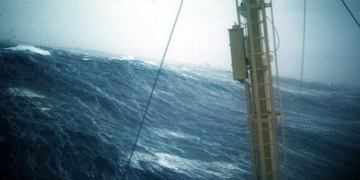Let’s take a look at some of the world’s most famous canals, similar to Vietnam’s “Panama”!
Though often overlooked, the role of canals is crucial to the maritime systems of both individual nations and the international community. Especially in today’s context, where the world is experiencing significant changes, canals serve as vital arteries connecting economic, political, and military centers across the globe.
In Vietnam, recently, the canal connecting the Day River and Ninh Co River in Nam Dinh, valued at 2.3 trillion VND, officially opened on July 25. The presence of this infrastructure will maximize the effectiveness of the improvements made to the channel through Lach Giang (which was completed and put into use in 2016). Additionally, this canal will allow 2,000-ton fully loaded ships and 3,000-ton light ships to travel further inland to the Ninh Binh and Ninh Phuc ports, thereby reducing transportation costs, alleviating pressure on roadways, and decreasing environmental pollution.
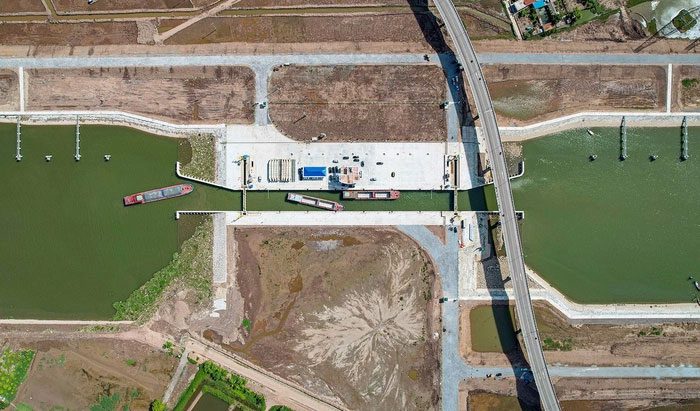
The canal connecting the Day River and Ninh Co River in Nam Dinh is valued at 2.3 trillion VND. (Photo: Tien Phong).
As of now, there are hundreds of canals around the world. Below are five famous canals that are similar to Vietnam’s “Panama.”
1. The Oldest Canal – Grand Canal
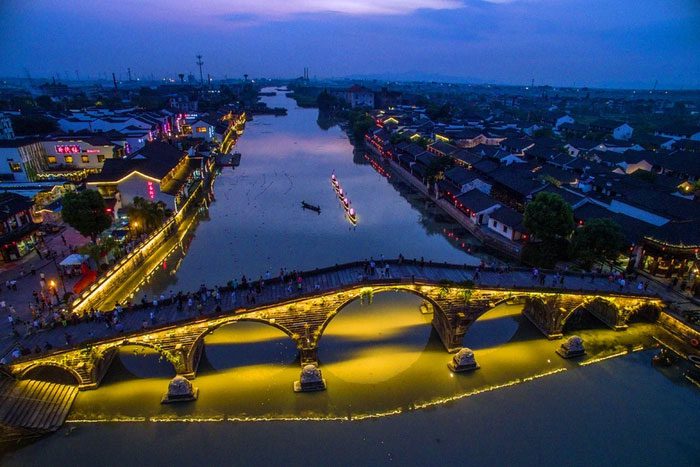
The Grand Canal is one of the longest and oldest transport canals in the world. (Photo: Travel)
The Grand Canal is one of the longest and oldest transport canals in the world, also known as the Grand Grand Canal. It passes through cities and provinces such as Beijing, Tianjin, Hebei, Shandong, Jiangsu, and Zhejiang. This canal has played a significant role in the economic and cultural exchanges between the northern and southern regions of China. It is estimated that around 100,000 ships pass through this canal each year. In 2014, the Grand Canal was designated as a UNESCO World Heritage Site.
2. The Most Used Canal – Suez

The Suez Canal is one of the most frequently used maritime routes in the world. (Photo: Travel)
The Suez Canal was constructed in 1869. It is one of the most frequently used maritime routes in the world. With a length of 193.5 km, the Suez Canal is a crucial route for maritime trade. After its construction, this canal permanently altered the history of international shipping, allowing vessels to avoid the lengthy journey around the Cape of Good Hope, shortening the distance by 6,000 km.
3. The Most Technically Challenging Canal – Panama
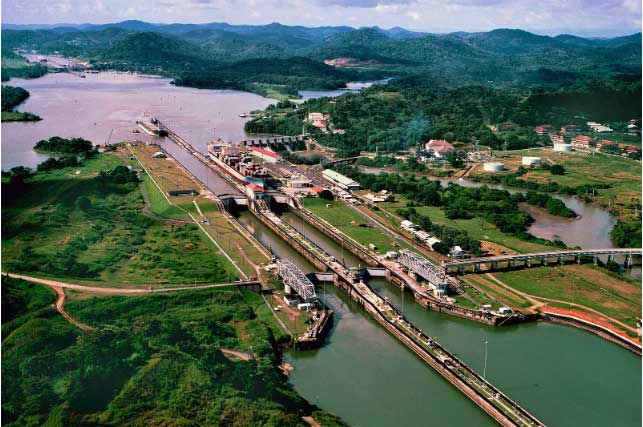
The Panama Canal was constructed over three decades through the efforts of many individuals. (Photo: Travel)
The Panama Canal is an artificial waterway 82 km long in Panama, connecting the Atlantic Ocean with the Pacific Ocean and dividing North and South America. The Panama Canal was built over three decades through the sweat and labor of countless individuals. In 1994, it was recognized by the American Society of Civil Engineers as one of the seven greatest engineering achievements of the modern world. This project has made significant economic contributions, reducing shipping costs between the two oceans. In the past, transporting goods from New York to San Francisco required a journey of over 22,500 km around the Drake Passage and Cape Horn at the southern tip of South America; now, thanks to the Panama Canal, this distance has been reduced to just 9,500 km.
4. The Second Longest Canal in the World – Erie
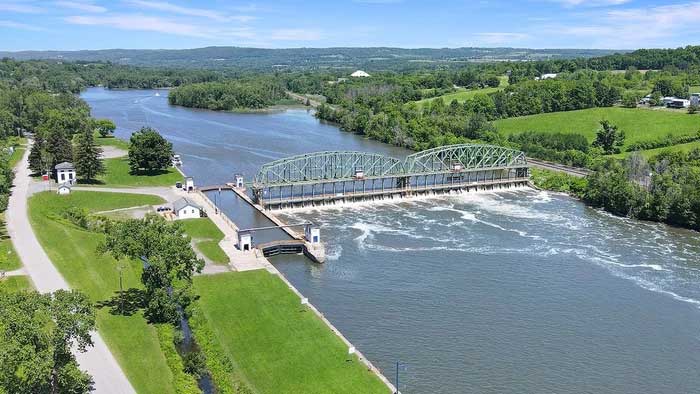
Completed in 1825, the Erie Canal is the second longest in the world after the Grand Canal in China. (Photo: Travel)
The Erie Canal is a canal in New York, USA, which is part of the eastern part of the West River, a trans-state route of the New York State Canal System (formerly known as the New York State Barge Canal). When completed in 1825, it was the second longest canal in the world (after the Grand Canal in China) and significantly boosted the development and economy of New York City and the United States. The Erie Canal not only accelerated transportation speeds but also reduced most transportation costs in coastal and inland areas.
5. The Busiest Artificial Canal in Europe – Kiel
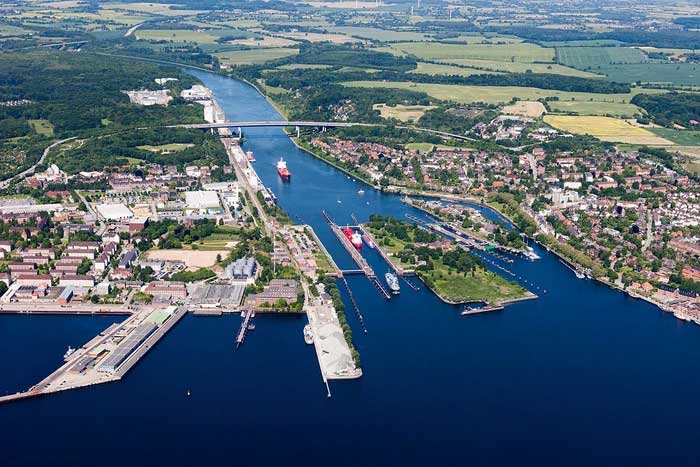
The Kiel Canal is considered the busiest artificial waterway in Europe. (Photo: Travel).
Opened in 1895, the Kiel Canal stretches 98 km through the state of Schleswig-Holstein in Germany. This artificial canal brings ships closer to Denmark. The Kiel Canal connects the North Sea with the Baltic Sea, not only shortening the journey by 460 km but also helping vessels avoid the difficulties and risks of cargo transport. It is regarded as the busiest artificial waterway in Europe, with an average of 250 vessels passing through the canal each day. It took 8 years and over 9,000 workers to complete the construction of the Kiel Canal.




















































